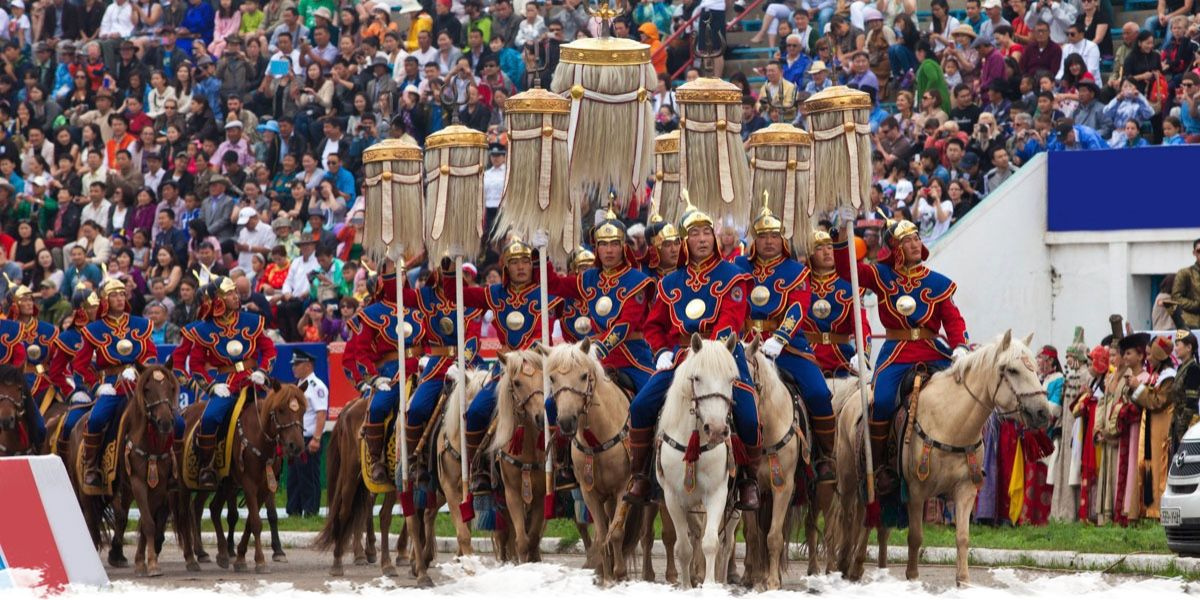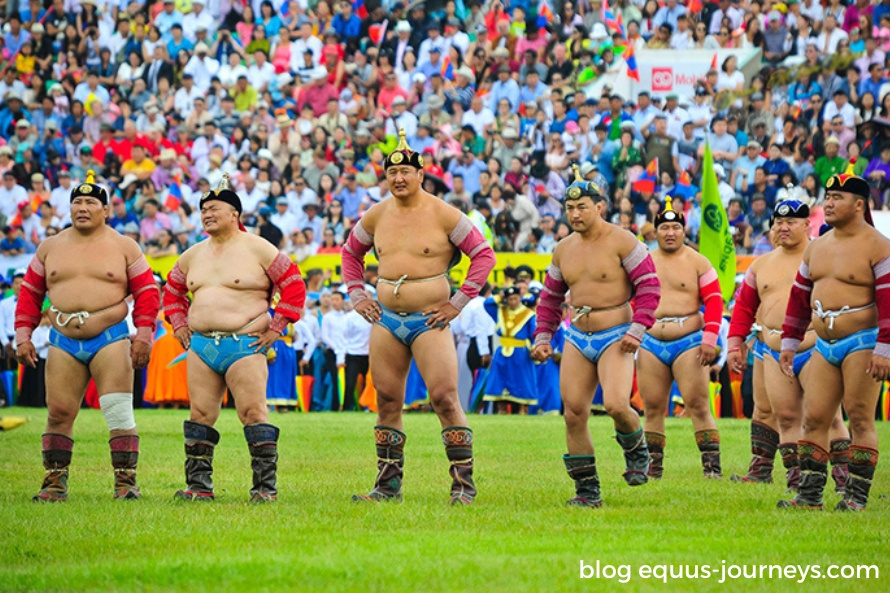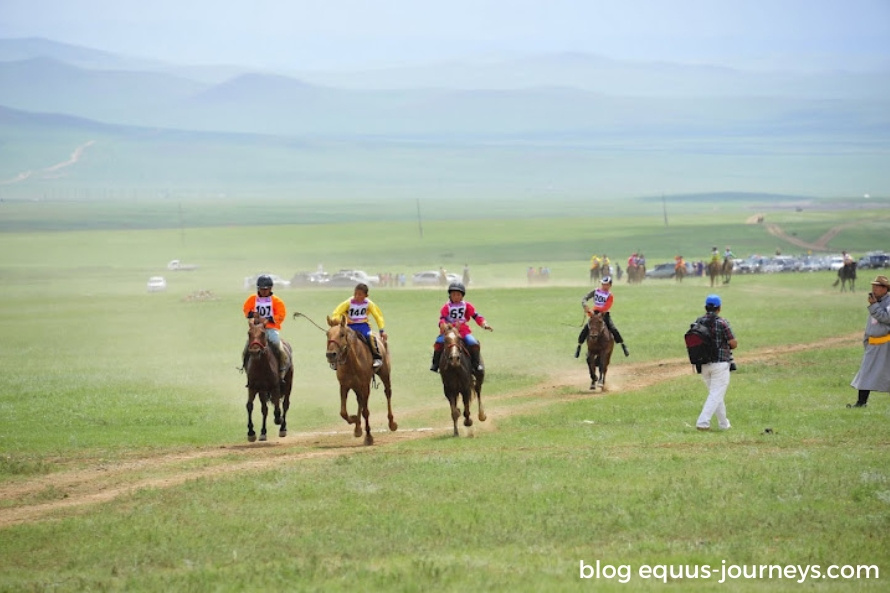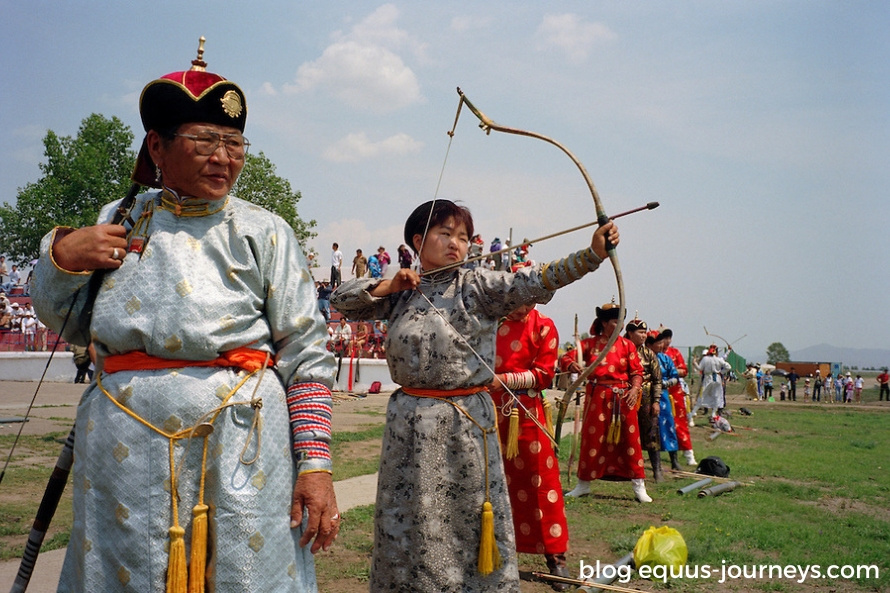
Mongolia’s Naadam Festival – A Celebration of Nomadic Culture
This week in Mongolia, one of the last places on earth where nomadism thrives, everyone is preparing for a very special, national festival. Showcasing three traditional games -- horseracing, wrestling and archery – the Naadam Festival celebrates the nomadic civilisation of the Mongols, who, on Central Asia’s vast steppe, have long lived a simple life of pastoralism.
Said to originate centuries ago to promote the unity of the fraternal tribes and to improve soldiers’ fighting skills, Naadam is, today, one of the most watched festivals by Mongols, and is marked across the country on the 11th - 13th July every year.
Alongside the main games, or ‘three games of men’, activities such as knucklebone shooting, performing arts, craftsmanship, singing and traditional dancing (Biyelgee) also feature prominently during festival time. During these festive days, the country’s nomads wear their finest deel, the traditional Mongolian outfit, saddle their best horses, and head to gathering places. Customs are said to show respect for nature and the environment.
In the capital Ulaanbaatar, locals and tourists can gather at the National Stadium to watch the wrestling and archery competitions, and to enjoy the warm and upbeat atmosphere around the stadium. Many can be found enjoying the traditional cuisine khuushuur (a fried meat dumpling), often served with airag (a drink made of fermented horse milk). Interestingly, everyone is permitted (and encouraged) to participate in Naadam, which creates a feeling of community and togetherness. Competitors – which may include men, women and children, depending on the spot -- are respected and admired, and the winners are awarded titles.
Wrestling

Wrestling is seen as an important cultural heritage, and a display of strength, bravery, skill and technique. Traditional wrestling sees participants lose if they touch the ground with any body part aside from their feet or hands. Wrestling is for men only.
Horse racing

Mongolians of course, have a special connection with horses. Without the Mongol horse, they believe nomadic life would be unimaginable. The ability to identify and train racehorses is respected and said to stem from centuries of nomadism. Initially, races were related to different geographical regions, but since 1899, races have been organised according to the horse’s age. Just outside Ulaanbaatar, in Khui Doloon Khudag, tourists can visit the horse races, where up to 1000 horses and the most renowned horse trainers from all corners of the country gather to determine which horses are the fastest in Mongolia.
Archery

Archery is one of the oldest national sports in Mongolia. The bow and arrow was one of the main hunting tools used during the Stone Age, but over the years, archery has changed and become more sophisticated. Today, there are three types of archery: Khalkh (both men and women can participate), and Uriankhai and Buryat (for men only).
According to the official website, Naadam is the expression of Mongolian history and culture, and highlights the identity of the Mongol nation to the rest of the world. In 2010, the Naadam Festival was added to UNESCO's List of the Intangible Cultural Heritage of Humanity.
Photos: All photos were provided by our local partners in Mongolia.
More information:
To find out more about our rides in Mongolia, including a chance to enjoy the Naadam Festival, please visit our website.
You can also contact us directly at info@equus-journeys.com or +44 (0)1905 388 977.
